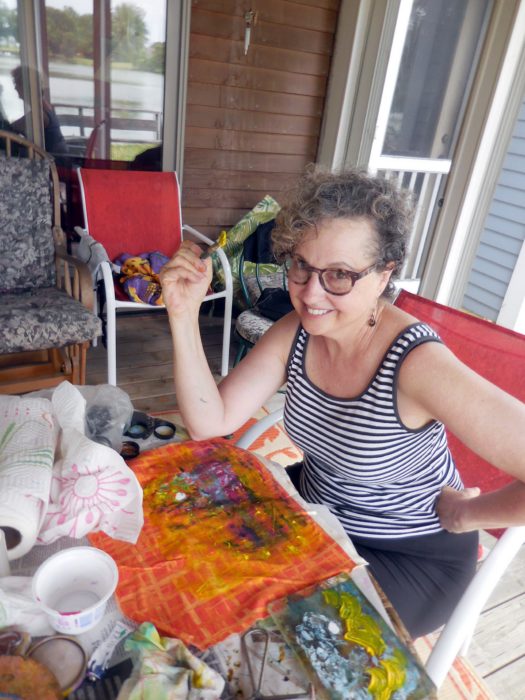
After winning, at a charity auction, a week at a large, lake-side house in Delaware, I invited a bunch of friends to come and play. On one of those mornings, three women answered the call to make art. I brought fabric, paints, brushes, a couple of brayers, a Gelli art printing plate, and a mess of empty plastic containers, jars, and lids. I demo’ed what I’d learned about monoprinting:
Dab bits or globs of of acrylic paint on the Gelli plate, and roll it out with a brayer. Brush on dots or drag lines with the tip of the brush handle as the spirit moves you. Then, flip the plate onto fabric (I started with an orange print), and roll over it with a second, clean brayer.
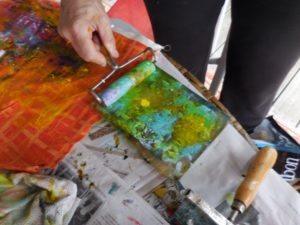
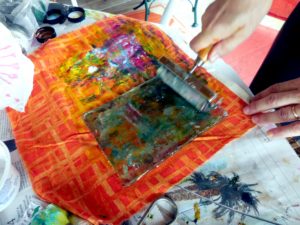
Lift it up, and see what you’ve got. Add more monoprints alongside or on top. Add dots and dashes and lines of paint.
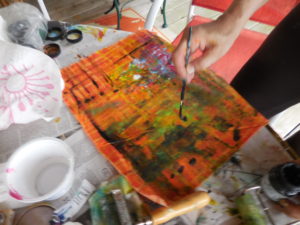
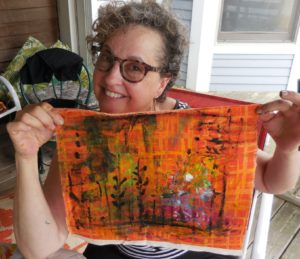
Below, check out part of another piece I belabored. I really wasn’t thrilled with anything I made. No matter! For me, this is just a start…I’ll cut up painted pieces for sections of an art quilt, or make art quilt postcards, adding other scraps, plus lots of decorative stitches.
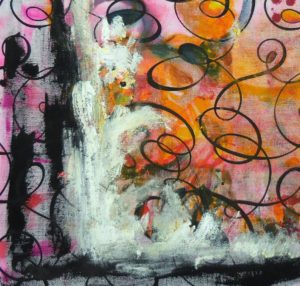
What really gets me jazzed is how my buddies, all monoprinting novices, absolutely, positively surpassed me in creating much more successful art pieces. And came up with techniques of their own that I never would have discovered.
Claire dared to use the same swirly-print fabric, but with a fun, folk-arty flair:
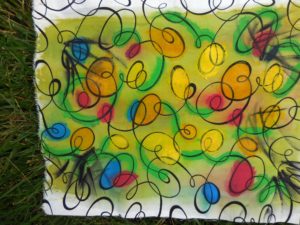
This intuitive Alaskan also used the Gelli plate to pick up excess paint from her fabric, then turned the plate 90 degrees and rolled over the brayer to deposit perpendicular patterns. Claire shows off one side, then the other. Which do you like best?
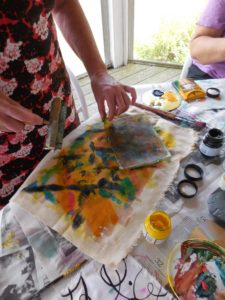
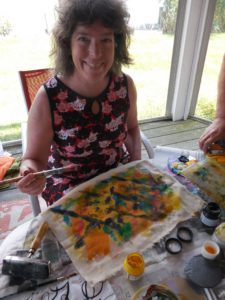
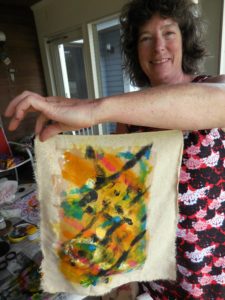
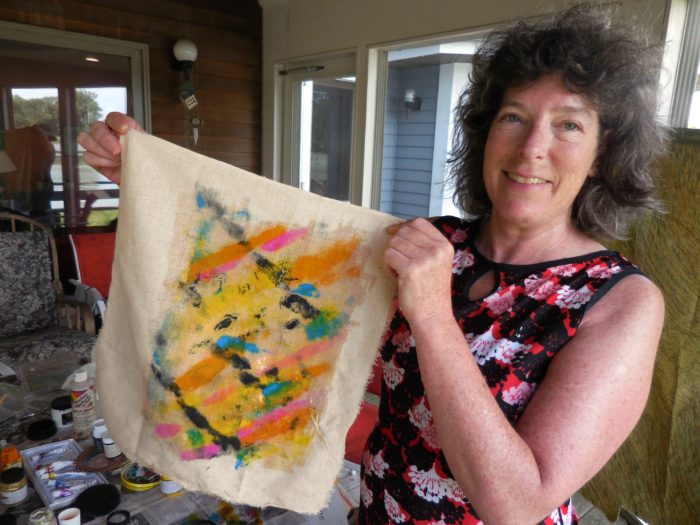
Meanwhile, Barbara of Bucks County, PA channeled Monet. I loved how she used clear plastic containers to alternate with the Gelli plate for monoprinting.
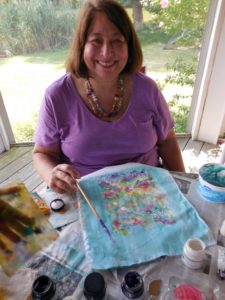
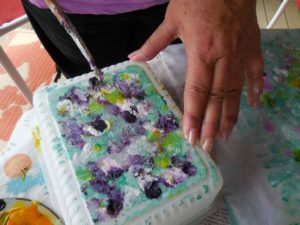
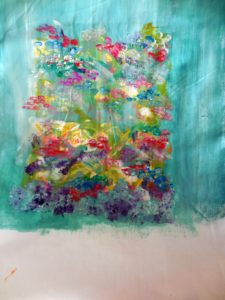
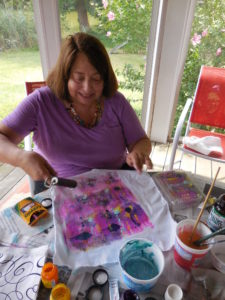
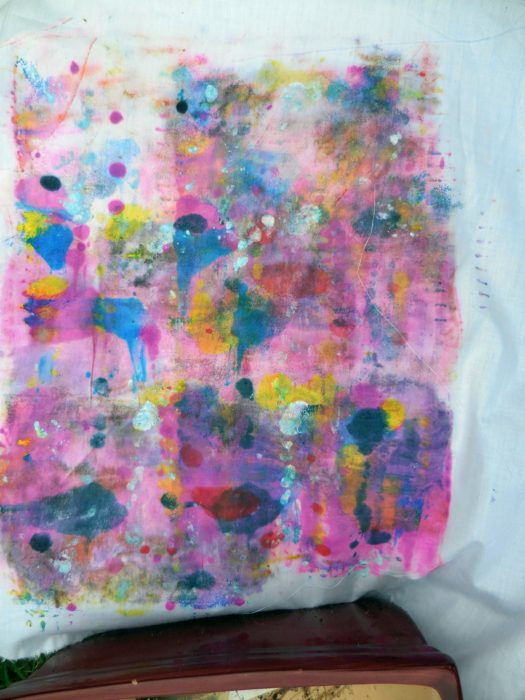
Finally, Dr. Marjorie of Narberth, PA mainlined a thoroughly modern, expressionist vibe, a la Miro, or Braque:
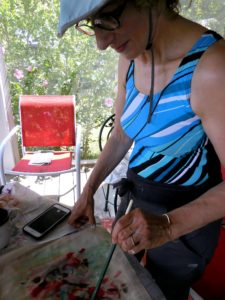
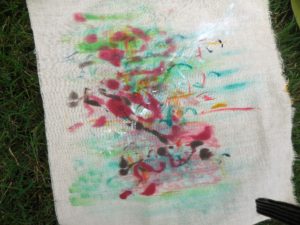
Again, we found that the paint that leaked onto the back of the fabric had a simpler, more compelling design. Serendipity goes a long way!
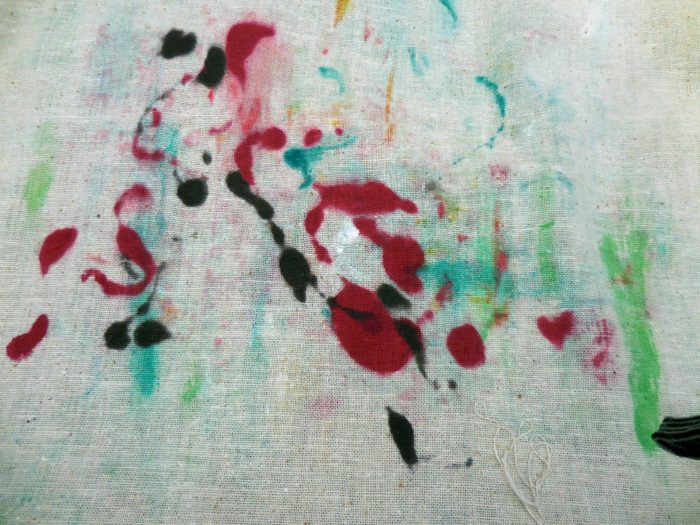
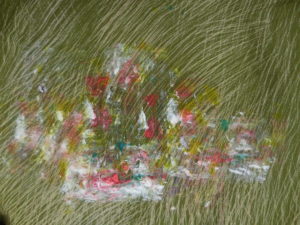
Another Marjorie experiment with a fabric that already has a strong print.
Monoprinting can be fairly monotoned, but is never monotonous. Printing over and over with the underside of a clear plastic container leads to a powerful abstract statement.
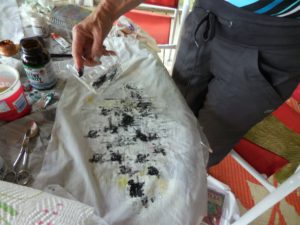
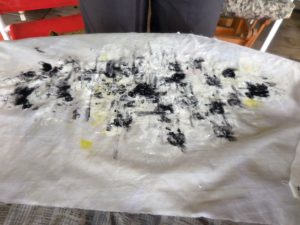
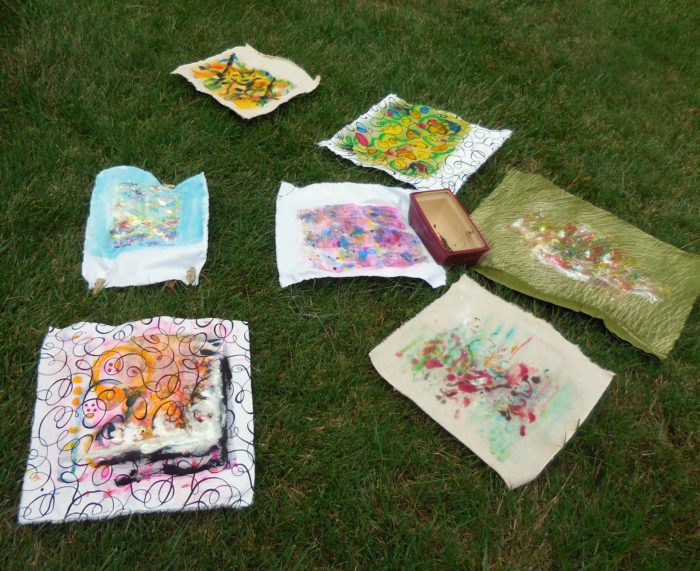
Many thanks to Miss Peggy, for taking over the photographing, given that our hands were full of paint!
Working with paints and various tools makes for lots of trading brushes and plastic lid paint palettes…and lots of mess. All the better to find a buddy or two or three to share the setting up, cleaning up, and fun. Can’t wait for the next play-date!


Looks like you had fun, with lovely results! Now I want to paint something!
I was going to say exactly the same thing that Cathy said. So ‘DITTO’ for me. I would love a vacation play time like that. What F U N !
All it takes is a gathering of friends and stuff and the willingness to forego all the responsibilities of life for a bit!! But yes, wish I could play with YOU, Ann!!
And only a bit more geographically convenient, with Cathy P!
That swirly print base fabric is to dye for. I would love some of that, do you still have the selvedge, can you read the manufacturer, the model name, anything????
I buy white-on-white fabric when I find it and it makes the most miraculous deconstructed screen prints.
Thanks for sharing the fun.
Diane
Probably got it at Jo-Ann’s, in a remnant bin…or on a bolt. It’s indoor-outdoor fabric, like (if not) Sunbrella or Solarium. Doubt it’s still around, and really, it doesn’t absorb dye or paint as cotton would.